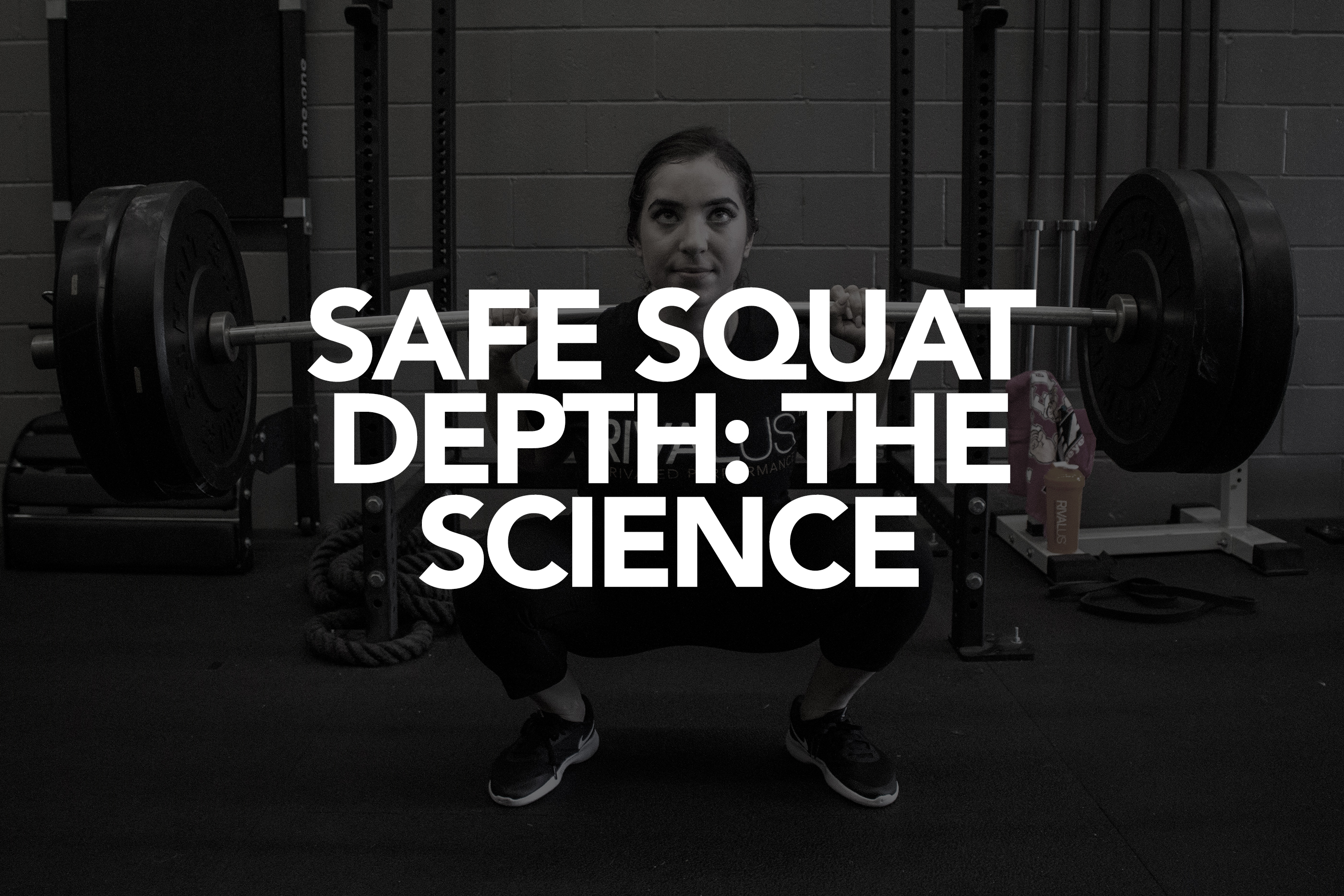Safe Squat Depth: The Science
Posted by Team RIVALUS on Jul 20th 2018
Safe Squat Depth: The Science
The squat is one of the most relied upon movements in all athletics. It's a common belief that performing a squat bellow parallel, or past a 90 degree angle on your knee can lead to long term damage on the knee joints and lumbar spine. But among the bodybuilding community, legend Tom Platz preaches that you must go as low as possible to achieve maximum strength and growth, which some say will actually save your joints in the long term. But with so much conflicting evidence, it’s important to take a deeper look on the issue.
Using PubMed, a German study done between the dates of March 2011 and January 2013 reviewed over 164 articles that pertained to the question of whether squatting below parallel and adding more knee flexion is less safe on the body compared to performing half squats with less knee flexion (Hartmann, 2013). Whilst measuring and calculating forces on cadaver knee joints, it was found that the highest amount of pressure on knee flexion was actually located at the 90 degree mark of the deep squat movement (Hartmann, 2013). These results are similar to another test.During an 8 week time frame, participants ranging from weightlifters, powerlifters and other age matched individuals were instructed to perform different depths of the squat movement. By the end of the 8 week period, the change in squat depth hadn’t shown any sign of decreased stability of the knee or surrounding area in any of the willing participants (Chandler, Kibler, McMillan, Richards, 2001). Instead, it was found that high repetition or endurance fitness actually helps strengthen ligaments and should be a crucial staple in a rehabilitation or workout routines (Escamilla, 2000). Instead the concern was then taken off the knee and actually placed on the lower back, and noted that the failure wasn’t due to knee instability, but muscle failure and raised body temperatures (Chandler, Kibler, McMillan, Richards, 2001).
Also, most of the area inside and surrounding the knee are actually susceptible to anabolic metabolic processes, which allows body parts such as the cartilage, ligaments, bones and menisci all to adapt their functions and structures to the amount of mechanical influences and levels of stressful activity that it endures (Hartmann, 2013).
Back problems caused by squats generally aren’t directly associated to the exercise itself, but to someone’s lack of education on proper form or a qualified spotters supervision (Chandler, Kibler, McMillan, Richards, 2001), or lack of range of motion caused by tight muscle groups that contribute to lower back pain. Although placing any sort of heavy weight or resistance on the upper back will increase strain on your back and spine, the most frequent flaws that lead to pain or injury have more to do with lifting a weight too heavy and/or instead of progressively adding a weight slowly to create a manageable load, progressing to a higher weight too quickly, which causes the upper body to lean too far forward, putting the lower back into an extremely vulnerable position for injury (Chandler, Kibler, McMillan, Richards, 2001).
Since most people have somewhat of a sedentary lifestyle of sitting in desks, chairs or couches all day, for the most part we have begun to lose the musculature support of our trunk area, our hip flexors tighten and we begin involuntarily practicing poor posture (Richardson, Jull, Toppenberg, Comerford, 1990). This is why everyone are recommended to first ensure that they have strong core stability muscles and continue to maintain them. A strong torso helps aid the trunk muscles, creates abdominal pressure, and takes the pressure off the lumbar spine when in a vulnerable down positions (Richardson, Jull, Toppenberg, Comerford, 1990).
In conclusion, provided that the individual performing the movement has learned proper techniques, creates a slow and steady increase in weight and is accompanied by a trained expert supervisor, the physical movement of the deep squat itself poses very little threat to a person’s physical health because it does not pose threat or risk injury of the body’s passive tissues (Hartmann, 2013 & Chandler, Kibler, McMillan, Richards, 2001). With these key steps in mind, contrary to society’s popular belief, the deep squat exercise will actually not only quickly add mass while strengthening the lower body, but also provide the individual with protection against future injury by allowing parts of the knee susceptible to anabolic metabolic processes to strengthen and adapt (Hartmann, 2013).
References:
By Jeff Chandler, Ed.D., C.S.C.S., FACSM,; Ben Kibler, M.D., FACSM; Jim McMillan, Ed.D., C.S.C.S. and David Richards, M.D., (March 2000) For the American College of Sports Medicine (ACSM's)
Article: Squat Safety, American Fitness Nov/Dec2001, Vol. 19 Issue 6, p43
Hagen Hartmann, Klaus Wirth, Markus Klusemann (July 2013) Analysis of the Load on the Knee Joint and Vertebral Column with Changes in Squatting Depth and Weight Load, Published in Sports Medicine October 2013, Volume 43, Issue 10, pp 993-1008
Tegner, Yelverton M.D.; Lysholm, Jack M.D., Ph.D. (September 1985) SECTION I: SYMPOSIUM PROGRESS IN SPORTS MEDICINE: Rating Systems in the Evaluation of Knee Ligament Injuries. (C) Lippincott-Raven Publishers
Michael W. Krzyzewski Human Performance Laboratory, Division of Orthopaedic Surgery, Duke University Medical Center, Durham (2001) Knee biomechanics of the dynamic squat exercise. Med. Sci. SportsExercise Vol. 33, No. 1, 2001, pp. 127–141
University of Queensland, Department of Physiotherapy: Carolyn Richardson Phd, Gwendolen Jull, Rowena Toppenberg, Mark Comerford (Presented 1990, published 1992) Techniques for active lumbar stabilisation for spinal protection: Apilot study.Vol. 38, NO 2, Pages 105-112
Shingo Fukagawa, Alberto Leardini, Barbara Callewaert, Pius D. Wong, Luc Labey, Kaat Desloovere, Shuichi Matsuda, Johan Belleman (June 2012) Age-related changes in kinematics of the knee joint during deep squat. The Knee: Volume 19, Issue 3, June 2012, Pages 208–212
+ Share
